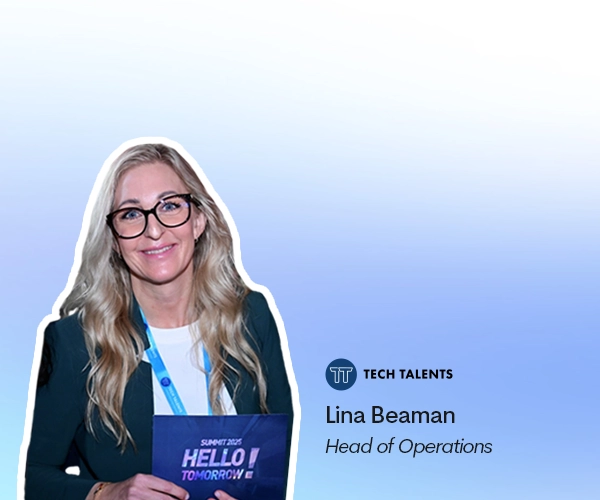In 2025, the competition for top talent is tougher than ever. Candidates have more options, higher expectations, and greater transparency into what it’s actually like to work at your company. At the same time, businesses are under pressure to grow, adapt, and retain top talent in a rapidly changing job market. This is where your Employer Brand and Employer Branding-strategy can make a difference.
What is an Employer Brand?
Your Employer Brand is how you are perceived as an employer by potential candidates, existing employees and former employees. A strong Employer Brand results on average in:
- More relevant applications
- Faster recruitment processes
- Reduced recruitment costs
- A lower staff turnover.
A weak Employer Brand, on the other hand, can make it challenging to fill your open positions, which can often contribute to:
- Increased workloads for existing staff
- Having to turn down business opportunities
- Failing to expand and grow
What is Employer Branding?
But what does Employer Branding mean? And why is it so important? Employer branding means that you actively work to be perceived as an attractive employer by potential candidates, existing employees, and former employees.
The difference between an Employer Brand and Employer Branding is that an Employer Brand is how you are perceived as an employer, while Employer Branding is how you work to influence the perception of you as an employer.
By working smart and strategically with Employer Branding, you can reinforce, improve, or change the perception of you as an employer.
"I like to think of it as an Employer Branding machine, where Employer Branding is the actual machine, your EVP is the material you feed into the machine and your Employer Brand is the end product. The better the EVP you feed into the Employer Branding machine, the stronger your Employer Brand will be." - Amy Dyvelcrona, Employer Branding and Job Advertising Specialist at We Select.
Examples of Employer Branding activities:
- Creating targeted social media ads about working at your company
- Creating an attractive and engaging career site
- Attending recruitment events and career fairs
- Conducting team or company activities
- Conducting employee surveys or in-depth interviews
- Offering a competitive salary, occupational pension or commission.
- Providing leadership training
- Developing a clear career development model
- Building networks with schools and organizations
- Working with outdoor advertising
- Working with radio or podcast advertising
- Offering unique benefits
- Offering the possibility to work on site, hybrid-remote or remote.
- Offering the possibility to control how much you work (e.g. offering a 4-day working week or shorter working days).
- Offering the possibility to control when you work
- Developing a wellness program
- Rewarding performance and commitment
A strong Employer Brand leads on average to:
+ More applications per open position
+ More top candidates per open position
+ Faster recruitment processes
+ Lower employee turnover
+ Lower cost per hire
+ Higher employment rate
+ Long-term matches
A weak Employer Brand yields on average:
- Fewer applications per open position
- Fewer top candidates per open position
- Difficult to fill open positions
- High employee turnover
- Higher recruitment costs
- High workload
- Short-term matches
What is the difference between internal and external Employer Branding?
When working with Employer Branding, it is also common to distinguish between internal and external Employer Branding.
Internal Employer Branding means actively working to be perceived as an attractive employer among existing staff.
External Employer Branding means working to be perceived as an attractive employer by potential candidates, consumers, or suppliers.
"Building a strong Employer Brand requires a good balance between internal and external employer branding. For example, if you only work with external Employer Branding, there is a risk that your existing staff feels overlooked or that the image you protray of yourself doesn't match what it's actually like to work for you. On the other hand, if you only work with internal Employer Branding, you risk limiting your ability to reach out to potential top candidates and making it difficult to fill open positions." - Amy Dyvelcrona, Employer Branding and Job advertising Specialist at We Select.
Why is Employer Branding important in 2025?
The competition for talent remains one of the biggest challenges for Swedish companies – and Employer Branding is one of the most powerful tools to address it.
According to the latest report from Svenskt Näringsliv (Företagens regionala utveckling 2025), 8 out of 10 companies in Sweden have growth ambitions over the next five years. Yet, more than half (52%) say they face major obstacles due to difficulties in finding qualified candidates.
The competition for top talent, combined with a growing skills shortage, has made it harder than ever to attract, hire, and retain the right people. And the challenge is widespread:
- Only 3 out of 10 candidates are actively looking for a new job (LinkedIn)
- 7 out of 10 are passive candidates (LinkedIn)
- 9 out of 10 candidates say a company’s reputation influences their decision to apply
This is where Employer Branding becomes essential.
Companies that actively work with Employer Branding see:
- +50% more applications (LinkedIn)
- 50% lower cost-per-hire (LinkedIn)
- 1–2x faster hiring processes (LinkedIn)
If you want to scale, attract top performers, and stay competitive in today’s job market, your Employer Brand needs to be a strategic priority.
Three signs that your company needs to prioritize Employer Branding in 2025
Not sure if it’s time to start investing in your Employer Brand? Here are three clear indicators:
1. You’re planning to grow
You have ambitious goals and need to scale your team, especially in competitive functions like sales or tech.
2. You’re going through a company change
Whether it’s digital transformation or repositioning your business, you’ll likely need to attract a new kind of target candidate and establish your Employer Brand.
3. You’re facing recruitment challenges
Few applications, long hiring times, high turnover, or reliance on expensive recruiters? These are all signs you need a stronger Employer Brand.
How to get started with Employer Branding
Getting started with Employer Branding can sometimes feel like a big and time-consuming process, but by continuously working data-driven and insight-based according to a clear strategy, you will be able to get started in no time:
1. Current situation analysis, goal setting & research
2. Development of your EVP
3. Evaluation & feedback
4. Launch, activation & advertising
5. Reporting & insights
6. Repeat

How do you measure your Employer Branding efforts?
In order to measure the impact of your employer branding work, it is important that you clearly define the purpose of your employer branding work. Is the main purpose of your employer branding work linked to your growth, a future transition or specific challenges? When you then have a clear picture of the purpose of your work, you will be able to more easily choose which key figures are relevant to follow during the work. Once you have identified which KPIs you will be able to monitor during the process, the next step is to conduct a current situation analysis of the KPIs you have chosen. By analyzing your current situation, you will be able to clearly demonstrate the effect of your work over time.
Common examples of Employer Branding metrics:
- Average cost per hire per department / Month
- Average number of career page visitors / Month
- Average number of applications per department / Month
- Average number of relevant applications per department / Month
- Average Time-to-fill / Month
- Number of job subscribers / Month
- Average % Staffing rate per department / Quarter
- % Staff turnover / Quarter
- % Quality of Hire / Quarter
Key figures also available via We Select:
- Your average cost per recruitment per department/month vs. industry average
- Your average number of career site visitors / month vs. industry average
- Your average number of applications per department/month vs. industry average
- Your average number of relevant applications per department/month vs. industry average
- Your average Time-to-fill / Month vs. Industry average
- Your number of job subscribers / month vs. industry average
- Your average % Staffing rate per department / Quarter vs. industry average
- Your % Employee turnover / Quarter vs. industry average
- % Quality of Hire / Quarter vs. industry average
Want to dive deeper into different Employer Branding metrics and how to track them effectively? Download our guide: How to Measure the Effects of Employer Branding.
The latest trend in Employer Branding: Employee Branding
While Employer Branding focuses on how your organization is perceived from the outside, Employee Branding is about how employees themselves represent your brand – both online and offline.
In 2025, one of the most powerful ways to strengthen your Employer Brand is through EGC: Employee-Generated Content. This means encouraging employees to share their genuine experiences at work – on LinkedIn, Instagram, TikTok, or even in internal newsletters and events.
Why is this so effective? Because people trust people more than brands. A candidate is far more likely to believe an authentic post from a team member than a polished ad or corporate video. Companies that embrace EGC not only build trust – they also create a culture of advocacy that boosts engagement, retention, and brand visibility.
Curious about how EGC is shaping Employer Branding this year? Check out our blog post: The Biggest Employer Branding Trends of 2025

Furthermore, the LinkedIn Future of Recruiting 2025 report highlights how the recruiter’s role is evolving into a more strategic function, focusing on relationship-building, communication, and delivering a more human experience. These shifts go hand in hand with the work of Employer Branding, where authentic storytelling, long-term candidate engagement, and trust-building are key.
Want to dive deeper into how employees shape your brand from the inside out? Read our full guide on the difference between Employer Branding and Employee Branding – and why both matter in 2025.
Final Thoughts: Your Employer Brand Is a 2025 Business Priority
In 2025, Employer Branding isn’t just a nice-to-have – it’s a critical part of any successful recruitment and retention strategy. Whether you’re scaling, transforming, or simply trying to stand out in a competitive market, how you’re perceived as an employer will directly impact your ability to attract and retain the right people.
By taking a strategic, data-driven approach and aligning your efforts with your overall business goals, you’ll build an Employer Brand that not only resonates today, but continues to deliver value far into the future.
Curious how We Select can elevate your Employer Branding in 2025? Book a free consultation with our team and discover how strategic Employer Branding can help you attract top talent, reduce hiring costs, and support your business growth in 2025 and beyond.





